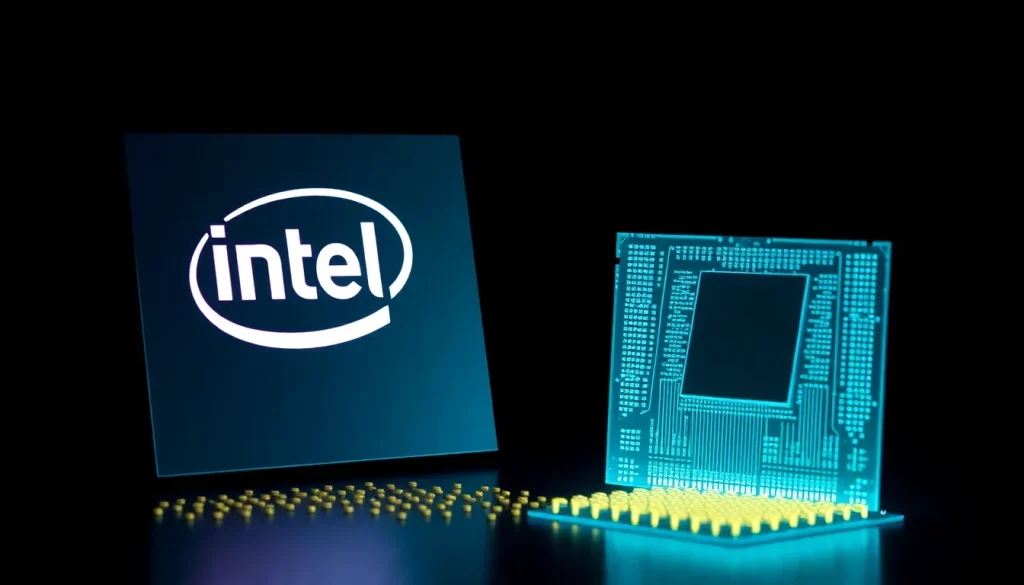Intel Foundry Actively Pursuing Former TSMC Executive for Chips

In the rapidly evolving semiconductor industry, the competition is fierce, marked by significant shifts in leadership and strategy. Intel's recent moves signal a renewed determination to reclaim its status in chip manufacturing. At el centro de esta ambición, la búsqueda de un destacado exejecutivo de TSMC podría ser la clave para un cambio estratégico que impacte a toda la industria.
Intel's strategic pursuit of TSMC's former executive: a bold move for a comeback
Intel has undergone a transformative phase since the appointment of new leadership. Under CEO Lip-Bu Tan, the company is keen to reposition itself within the semiconductor landscape. A significant part of esta estrategia se centra en su división de foundry, que busca reconocimiento y relevancia en un mercado donde TSMC ha sido el líder indiscutible.
Recent reports indicate that Intel has approached Wei-Jen Lo, formerly the Senior Vice President of Corporate Strategy Development at TSMC. Lo's contributions to TSMC were pivotal, particularly in the development and implementation of advanced chip technologies. His expertise in EUV (Extreme Ultraviolet) lithography and the upcoming 2nm chip process positions him as an invaluable asset for Intel.
However, Lo's transition from TSMC to Intel is not straightforward. He retired from TSMC in July 2025 and is currently bound by a two-year non-compete clause, complicating his potential move. This clause restricts him from joining rival firms, including Intel. Despite these barriers, there is speculation that government intervention might facilitate Lo's transition if Intel's pursuit is serious enough.
Understanding the dynamics of the semiconductor industry
The semiconductor sector is characterized by rapid technological advancements and fierce competition, where a few key players dominate the market. TSMC, with its cutting-edge manufacturing processes, has consistently outpaced competitors, including Intel. To comprehend the significance of Intel's interest in Lo, es crucial entender las razones detrás del éxito de TSMC y los desafíos que enfrenta Intel. Algunos factores a considerar incluyen:
- Innovación tecnológica: TSMC ha liderado el camino en la adopción de tecnologías avanzadas, como el proceso de 5 nm y más allá.
- Producción a gran escala: La capacidad de TSMC para producir chips en grandes volúmenes ha permitido a sus clientes satisfacer la demanda global.
- Colaboraciones estratégicas: TSMC ha cultivado relaciones sólidas con empresas líderes como Apple, Nvidia y AMD.
- Inversión en I+D: Un enfoque constante en la investigación y el desarrollo ha sido fundamental para mantener su ventaja competitiva.
Intel's challenges in overtaking TSMC
Intel's fall from grace has been attributed to several factors, including delays in adopting new manufacturing technologies, internal restructuring issues, and increased competition from other foundries. To address these challenges, Intel is implementing significant changes in su enfoque de fabricación y gestión. Algunos de estos cambios incluyen:
- Reestructuración del equipo directivo: Intel está ajustando su jerarquía para facilitar una toma de decisiones más ágil y efectiva.
- Enfoque en la investigación tecnológica: La empresa está invirtiendo en I+D para acelerar el desarrollo de tecnologías avanzadas.
- Alianzas estratégicas: Intel busca asociarse con empresas emergentes y establecidas para diversificar su cartera de clientes.
Implications of Wei-Jen Lo's potential move to Intel
If Wei-Jen Lo were to join Intel, the impact could be profound. His track record at TSMC showcases his ability to drive innovation and efficiency. Sin embargo, su paso a Intel no estaría exento de repercusiones. Algunas implicaciones incluyen:
- Impacto en la reputación: La transición de Lo podría ser vista como una traición en la comunidad de semiconductor en Taiwán.
- Mejoras tecnológicas: Su experiencia podría acelerar el desarrollo de nuevos procesos en Intel.
- Posibles tensiones políticas: El movimiento podría atraer la atención del gobierno taiwanés, dadas las implicaciones estratégicas.
The future of Intel's foundry division
Intel's foundry division is at a crossroads, with the potential to redefine its role in the semiconductor ecosystem. La contratación de líderes con experiencia, como Lo, es solo una parte de una estrategia más amplia para revitalizar la empresa. Para tener éxito, Intel deberá:
- Construir una cultura de innovación: Fomentar un entorno que valore la creatividad y la experimentación.
- Fortalecer las capacidades de producción: Aumentar la capacidad de producción para satisfacer la demanda global.
- Implementar feedback continuo: Establecer mecanismos para evaluar y adaptar las estrategias en tiempo real.
In conclusion, while the pursuit of Wei-Jen Lo by Intel underscores its determination to reclaim its stature in the semiconductor industry, the path forward remains challenging. As the competition grows fiercer, the decisions made today will shape the landscape of chip manufacturing for years to come.
Para un análisis más profundo sobre la situación actual de Intel y su división de foundry, puedes ver el siguiente video:
As the semiconductor industry continues to evolve, Intel's next moves will be closely monitored by industry analysts, competitors, and consumers alike. The outcome of this pursuit could very well dictate the future trajectory of the company in a market that waits for no one.




Leave a Reply